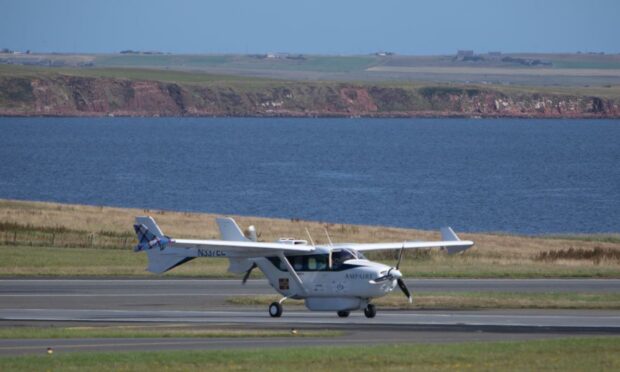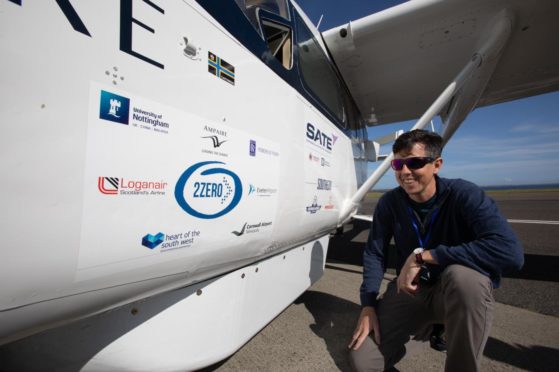A hybrid electric aircraft flew across the Pentland Firth in what was a first demonstration of the technology in the UK.
The modified six-seat Cessna 337, powered by battery and a conventional combustion engine, was also the first electric aircraft to fly a viable regional airline route in what has been hailed as a “milestone” for low carbon aviation in the UK.
Ampaire, a firm which specialises in developing hybrid electric powertrains for existing commuter aircraft, hailed the flight from Kirkwall Airport to the landing strip at Wick John O’Groats as an important step in towards decarbonising aviation in Scotland.
Susan Ying, Ampaire’s senior vice president for global operations said: “We are delighted to have made history in Scotland this week with these pioneering hybrid electric flights on commercially viable lifeline routes, an important segue to scheduled, sustainable air service.
“Hybrid-electric aircraft achieve two objectives: reducing harmful emissions and reducing cost of operations to the point that routes such as Wick-Kirkwall become viable for regional carriers. They can also make current routes more profitable while lowering fares and strengthening connectivity.”
The trial was part of the Sustainable Aviation Test Environment (Sate) project which was created to test low-carbon aviation technologies as well as investigate the airport infrastructure necessary to support sustainable aviation. Sate is based at Kirkwall Airport, making it one of the first low-carbon aviation test centres in the UK. It is led by Highlands and Islands Airports (Hial) and funded by the government-backed innovation investor, UK Research and Innovation (UKRI), through its industrial strategy challenge fund.
Scotland at forefront of low carbon aviation
Graeme Dey, Scottish Government transport minister, said the Kirkwall test centre and companies such as Ampaire “put Scotland at the forefront of the transition to low-carbon aviation”.
He added that the demonstration flight was “an important step towards delivering our commitment to decarbonise scheduled passenger flights within Scotland by 2040″.
Lorna Jack, chair of Hial, said: “The Sate project is a very important collaboration for Hial. Our involvement means we can support innovative projects from our partners to achieve a shared goal, decarbonise our operations and deliver environmentally sustainable aviation.
“Ampaire is leading the way in delivering electric-powered aircraft that could provide a viable alternative power source for the aviation sector. It is very exciting to see this technology being tested for the first time in Scotland and we are proud that Kirkwall airport is the hub for this and future Sate projects.”
No hitch flight
The Ampaire aircraft, known as the Electric EEL technology demonstrator, made its maiden flight in the US in 2019. Following its adventures in Scotland, it will travel on to South West England where it will perform further demonstration flights between Exeter and Cornwall.
Ampaire test pilot Justin Gillen said: “Today’s flight to Wick went without a hitch, flying at 3500 feet and 120 miles per hour. The Electric EEL is easy to fly and we’ve achieved a total five hours here so far.”

